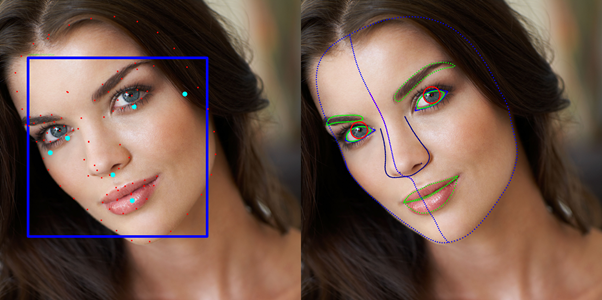With a billion downloads and more than 150 million monthly active creators, PicsArt isn’t just one of the world’s largest creative platforms; it is also one of the fastest-growing ones. Currently, it spans the globe and is available in over 30 languages.
At its core, PicsArt is a platform for photo & video editing that delivers its services via a mobile app that allows its users to edit images and videos, as well as apply filters/effects at the touch of a button.
As the underlying technology, several powerful AI algorithms are used to deliver the app’s functionality. One of them is a facial keypoint detection (FKD) neural network that is used to process images that contain people's faces.

Detecting facial key points is a very challenging problem in the field of computer vision, since facial features vary greatly from one individual to another, and even for a single individual there is a large amount of variation due to 3D pose, size, position, viewing angle, and illumination conditions. In turn, it involves detecting a dozen facial key points such as centers and corners of eyes, the tip of the nose among other features.
Therefore, one can safely state that FKD is a quite computationally intensive task and it can especially become an issue when it comes to mobile processing, as there is a limited amount of hardware on a given device.
Whether a mobile app is using FKD or another type of neural network, it is essential to minimize the system response time in any mobile application to ensure that the app performs well for any user on any device. Thus, it is advised to optimize the underlying neural networks as much as possible.
To deliver the best, most seamless user experience possible, PicsArt spent countless developer hours, used various tools that are available on the market, and carried out tons of trial and error to find the most optimal neural network architecture, thus cutting down on the system response time as much as possible. At that point, PicsArt had decreased it to 126 milliseconds.
To explore how to decrease the system response time even further, PicsArt asked enot.ai to find the optimal combination of hyperparameters from already optimised mobile blocks, thus further accelerating the underlying FKD neural network.
Results
While the FKD neural network had already
been significantly optimized by PicsArt’s specialists and engineers,
enot.ai’s framework was able to further decrease the system response time
to 89 milliseconds, thus providing an additional +37% acceleration
that would translate to an even more improved user experience.
In turn, it is important to note that enot.ai’s framework is fully automated and the optimization on enot.ai’s side took only about a day of developer time - a fraction of the resources that PicsArt had spent up until that point. If enot.ai’s tools had been used from the very beginning, better functionality could have been brought to the app’s users significantly sooner,, at a fraction of the cost and time that it actually took.
